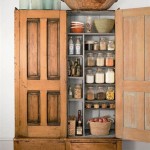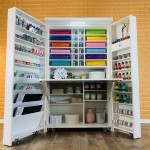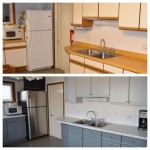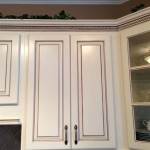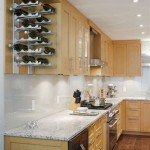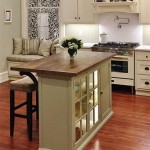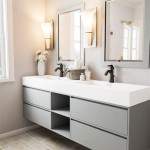What Size Should Cabinet Knobs Be?
When choosing hardware for your kitchen or bathroom cabinets, cabinet knobs are often a popular choice. They offer a sleek and minimalist look, and they are generally easier to clean than pulls. However, selecting the right size for your cabinet knobs is crucial to ensure they function well and complement the design of your space. This article will guide you through the factors to consider when determining the appropriate size for your cabinet knobs.
Cabinet Door Size and Style
The most significant factor influencing the size of your cabinet knobs is the size and style of your cabinet doors. Large, expansive doors can accommodate larger knobs, while smaller doors may benefit from smaller, more delicate knobs. Consider the overall aesthetic you are trying to achieve. Here are some general guidelines:
- Large cabinet doors: Doors exceeding 18 inches in width can comfortably handle knobs measuring 1.5 inches or larger in diameter.
- Medium cabinet doors: Doors between 12 and 18 inches wide generally work well with knobs ranging from 1 to 1.5 inches in diameter.
- Small cabinet doors: Smaller doors under 12 inches wide are best suited for knobs that are 1 inch or smaller in diameter.
Furthermore, the style of your cabinet doors can influence your decision. For instance, shaker-style doors, with their simple, flat panels, often look best with smaller, minimalist knobs. On the other hand, raised panel doors, with their more ornate design, can accommodate larger, more substantial knobs.
Ergonomics and Functionality
While aesthetics are important, the functionality of your cabinet knobs should not be overlooked. You want knobs that are easy to grip and turn, regardless of your hand size or grip strength. Smaller knobs might be aesthetically pleasing on smaller doors, but they can be difficult to grasp, especially for those with larger hands. Conversely, oversized knobs can be awkward to use on smaller doors, and they might catch on clothing or objects in your kitchen.
Consider the following factors for optimal ergonomics:
- Grip: Choose knobs with a comfortable shape and texture that allow for a secure grip.
- Projection: The projection refers to how far the knob extends from the cabinet door. A greater projection provides a more substantial grip, but it might increase the risk of bumping into the knob. A projection of around 1 inch is generally considered optimal for ease of use and avoiding obstructions.
- Mechanism: The mechanism of the knob should be smooth and responsive, ensuring that the knob turns easily and does not feel loose or wobbly.
Overall Design Harmony
Finally, consider the overall design harmony of your kitchen or bathroom. The style of your cabinet knobs should complement the other elements of the room, such as your countertop, backsplash, and hardware finishes. For instance, modern kitchens often feature sleek, minimalist knobs, while traditional kitchens might opt for more ornate, decorative knobs. The size of your knobs should also complement the scale of your other hardware, such as your cabinet pulls or faucets.
Remember, there are no hard and fast rules when it comes to cabinet knob size. Ultimately, the best size for your knobs is the one that feels comfortable to use, looks aesthetically pleasing, and complements the overall design of your space.

Comprehensive Guide To Cabinet Hardware Size Placement Handles More
Cabinet Hardware Sizing Guide The Knobbery Door Bath Accessories Faucets Furniture Knobs And Pulls
Cabinet Hardware Sizing Guide The Knobbery Door Bath Accessories Faucets Furniture Knobs And Pulls
Cabinet Hardware Sizing Guide The Knobbery Door Bath Accessories Faucets Furniture Knobs And Pulls

How To Place Cabinet Knobs Pulls

How To Place Cabinet Knobs Pulls

Learn How To Place Kitchen Cabinet Knobs And Pulls Cliqstudios

Here S How To Size Cabinet Knobs And Pulls

Learn How To Place Kitchen Cabinet Knobs And Pulls Cliqstudios

Kitchen Decisions Where To Place Your Cabinet Hardware The Studio M Bath Blog
Related Posts

